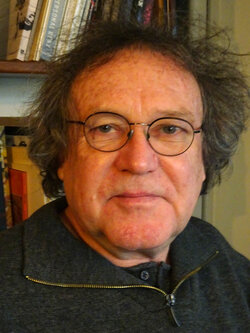Jacques Perrin, the freest producer of them all
By Dominique Gentil, AFCJacques Perrin sought to create powerful images. To do this, he knew how to deploy innovative logistical and technical solutions. In most of his films, as a producer or a director, the image is the motor of the narration. Whether in The Tartar Steppe or Himalaya, which was shot at over 5.000 meters above sea level, the narrative strength of the Iranian desert landscapes and the peaks of Nepal was unforgettable, as were the shoots in extreme conditions.
Nothing could stop Jacques Perrin so long as he hadn’t finished. His obstinacy to never give into to the easy solution often disturbed his co-workers, including me. Jacques Perrin dreamt his images and did everything possible to make them reality.
On Microcosmos : he developed a technical device that allowed us to perform micrometric traveling shots.
On Winged Migration : he designed an ultralight aircraft where the camera operator was seated in front of the pilot in order to allow for an unobstructed view greater than 180°.
On Oceans : he did camera tests in an underwater tank to design a torpedo underwater camera able to get ahead of a swimming school of fish and to create a high-performance stabilized head for underwater filming.
On Seasons : he created a silent, electric-powered scooter for traveling shots, which was able to go through forests as fast as a galloping horse.
Already, in 1981, on The Roaring Forties, Patrick Blossier, AFC, had been given the task of creating waterproof cases for cameras, which were tools that didn’t exist yet at that time. Jacques went looking for “the big storm” and wanted to film it as it had never been filmed before, as in the incredible sequence where the Aviso’s stem breaks through the Northern Atlantic waves in Drummer-Crab, a film he produced. (Helicopter images shot by Dominique Merlin).
The desire for truth never left Jacques Perrin. The bulk of his cinematographic production escaped the digital wave, and except for the underwater shots on Oceans and Seasons, I don’t think that the facilities that these new formats might have provided him would have altered his approach to a cinema of the real.
On Winged Migration, all of the images in the film were filmed live by us. No special effects. No overprinting. We totally flew with our birds, even the storks who gave us so much trouble.
On The Roaring Forties or The Tartar Steppe, Jacques fully respected the requests of Luciano Tovoli, his friend and director of photography, namely to wait for the exact correct light. Which can take time, a lot of time, especially when you want stormy skies in May in Brittany...
The trust producer Jacques Perrin had in his technicians and his acceptance of the constraints required for the result to live up to the project imagined are an exceptional and very rare quality. He took the time to write, respected the time necessary for filming, I don’t think I’m wrong in saying that he never made his directors or crews bear the financial cost of his ambitions. He always found the funding to provide us with the means to shoot under optimal conditions.
When a film was a success, he reinvested all of it, or even more…, in future projects. The money from the cinema went back to the cinema.
With Jacques Perrin’s death, we have lost free producer, who fought to preserve his freedom. Nothing stopped his will to pursue his projects and his visions. He had the culture of an "independent" producer for whom bringing a film to its successful conclusion is a creative process, he is one of those for whom producing is an Art.
Thank you, Jacques, for giving us the immense privilege of being among those who worked with you !
(Translated from French by A. Baron-Raiffe)
In the thumbnail of this article, Jacques Perrin and Dominique Gentil on the set of Winged Migration.
 En
En Fr
Fr






